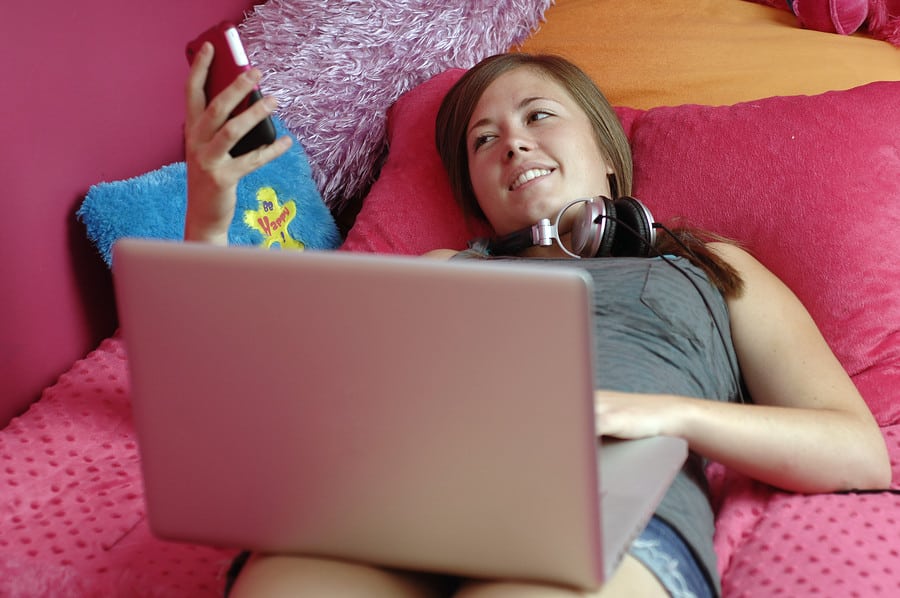“Women are so much better at multi-tasking than men” is a commonly heard boast.
With our busy schedules, fast-paced lives and many commitments, the ability to multi-task has long been something to aspire to, something that is supposed to give us more time, make us more efficient, and perhaps even make us more desirable as employees.
However, the research in this area suggests that we may, in fact, be less efficient if we try to do more than one thing at a time. We might get everything finished quicker so we can get more time on the couch but may be also be more likely to make a mistake, forget a step, or end up with a less-than-perfect result.
Well, before you stop trying to brush your hair while you are waiting for the toast to pop up and decide to stand there staring blankly at the wall like a nincompoop, there are a number of factors involved.
So let me help you make the decision about whether or not to multi-task…
A very important lesson to learn for those students who insist that watching TV or listening to music while studying is not affecting their homework-completing ability!
“Divided attention” is the term psychologists use to describe what happens when we require attention to perform two or more activities at the same time.
Some examples include:
- Driving a car while talking on the phone;
- Trying to cook two courses of a meal at one time (Jamie Oliver-style);
- Listening to music while trying to do write an essay;
- Writing an email while listening to a colleague tell you about their weekend; and
- Counting out your spare change at the supermarket while your toddler is nagging you for a treat.
In general, there are two theories about how our attention works:
1) We have a limited capacity to our attention and the resources required to perform simultaneous tasks
When we try to do more than one thing at a time, the attention that we can devote to each task is divided, not always equally.
For example, 80% of your attention may go towards listening to a colleague tell an interesting story and only 20% of your attention to writing an email.
Result: the email may end up with lots of spelling mistakes, ill-formed sentences or (have you ever done this?) snippets of text that relate to the conversation that you were having and not to the subject-matter of the email.
This is known as “Single resource theory”.
2) We have separate pools of attention and resources that relate to different kinds of tasks
For example, we may have one attentional pool that is required to do visual tasks, and another that is required to do auditory tasks, and so on.
This is known as “Multiple-resource theory”.
According to this way of thinking, we can simultaneously perform tasks that draw from different pools without affecting our performance in either task.
We can drive a car (using visual and motor skills), while also talking on the phone (using verbal and auditory skills) without one activity impacting on the other.
It is generally agreed (and research confirms) that when people are required to do more than one task at a time, performance on at least one of the tasks suffers.
Test this out for yourself by having a go at these activities.
This would seem to support the “single resource theory”. And, it does also seem to make sense that it is much harder to perform two tasks simultaneously if they require activity in the same part of the brain – such as two tasks that require motor skills (I, for one, have never been able to pat my head and rub my stomach at the same time).
It seems much easier to do a visual task and a verbal task at the same time, such as looking for your car keys while also chatting on the phone to your internet provider. This example supports the multiple-resource theory.
So perhaps there is a little of both theories we can believe?
By now, many of you will be convinced that your teenagers are trying to do too many things at once and that it may be affecting their schoolwork.
They may be studying with music on, switching back and forth between doing an assignment and looking at YouTube videos or trying to listen to an audiotape while playing Xbox.
Here are some tips that can help your kids study more efficiently…
If they are old enough, consider discussing these issues with them so you can compromise about what is reasonable.
When thinking about the ability to “divide attention” or multi-task effectively, we should encourage our children to:
- Schedule tasks so that they don’t interfere with each other. For example, can your teenager send a text message to a friend while waiting for a file to download?
- Assess how easily they can switch between tasks. This can be affected by:
- how similar the tasks are (ie. are they likely to get confused when they switch back and forwards between different activities?);
- how well they can integrate the two tasks (ie. switching between typing notes and listening to a lecturer); and
- whether the tasks are competing for the same resource (listening to two people talking at once).
It is also very important to take into account the difficulty and importance of the tasks that your child might be trying to complete.
Have a think about this: If you are driving somewhere and get lost, what is the first thing that almost every single driver does?
Answer: Turn off/down the radio and tell everyone in the car to shush.
Suddenly, the difficulty of the driving task has increased and there is a need for the driver to devote their full attention to that activity.
The same goes for your kids and their homework. Is it okay for them to listen to music if they are doing simple maths problems or the graphics for a project?
You might have less battles if you allow them some leeway when it comes to homework structure for less-demanding tasks.
However, it is also good to teach them that important homework requires focus and to explain the benefits of working efficiently – both in terms of the quality of the work they will produce and the fact that they can often work for a shorter period, and then enjoy a leisure activity when they take a break.
In addition to this, it is also worthwhile noting that natural ability and practice come into play when considering how much attention needs to be devoted to different activities.
A skilled typist/gamer/driver/cook might be able to carry on that activity almost sub-consciously and it may require very little effort on their part. They may find it very easy to carry out another task simultaneously without much effect to the performance of either activity.
But someone who is new to learning that skill will almost certainly require a lot more attention, may find the activity much more draining and possibly need a lie down afterwards.
This means that if your child is learning something new or is struggling with something, the effects of divided attention can be much more pronounced and it is much more important that distractions and other activities are minimised.
If you are a parent concerned about how your child is studying, it is probably worthwhile sitting down with them to have a frank discussion about divided attention and possibly even conducting some “experiments” with them to see how their performance is impacted.
This can be a very powerful way to demonstrate how attention works and will hopefully help your child makes some decisions themselves about how to study effectively.
If your child does insist on studying while doing something else at the same time, consider these ideas:
- Help them prioritise the tasks they are doing so that can find a strategy to ensure their attention is being divided in accordance with this. For example, if they have decided that listening to music is important while doing their maths homework, help them understand that maths is the priority. Therefore, most of the attention needs to be allocated to this task. To help with this, you may compromise by asking them to choose a particular type of music, or by turning the music down, or by listening to music when only doing the “easy” maths sums at the start of the activity.
- Minimise the number of potential sources of information. If you can’t get your child to give up all stimuli, try seeing if you can limit it by: getting them to choose between their phone, their computer, their radio or the family pet in their bedroom. Minimising the sources of information they have will hopefully also minimise the likelihood that each one acts as way of dividing their attention.
- Make learning on manual tasks as quick and easy as possible as they will have less of an effect on memory and sensory capabilities. This may mean teaching your child to touch-type efficiently so that they are able to focus on the words they wish to put on the page, rather than which key their finger is aiming for.
Lastly, a good tip is that modelling appropriate behaviour can be a great start. If your child sees you rushing around trying to do 40 things at once, it is understandable that they might try to do the same.
Doing mindfulness activities or brain training games can be a fantastic way to increase focus and attention and allow your child to ignore distractions that might be affecting them.

